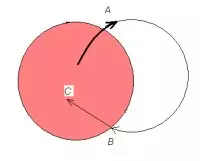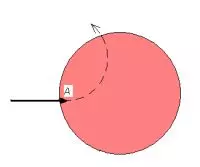Subheader 1: "Understanding Air Currents" XC paragliding demands a deep understanding of air currents, a challenging task since air is invisible. Pilots rely on their wings' behaviour, feeling their every move, to interpret the air around them. This intuitive connection is critical, especially when manoeuvring in thermals, an experience vastly different from everyday life.
Subheader 2: "Learning from Experience" I recall a conversation with a seasoned Yutse pilot who simplified the wisdom of thermal flying into a practical approach. He likened it to applying a mathematical algorithm, akin to the Newton method, to find the optimal path in the air. By evaluating the rate of climb, we decide our next turn, considering the glider's response time and staying within the thermal lift zone.
Subheader 3: "Simple Rules for Complex Flights" While the paraglider cannot turn instantly, understanding and following a few basic rules can significantly enhance thermal flying. Below, I outline these rules, combining practical experience with theoretical knowledge.
Subheader 4: "Reacting to Changes" Imagine flying in a thermal. As long as you're riding, you're on the right track. If you feel a drop and the variometer beeps lower, it's time to adjust. If you find yourself at the edge of a thermal (point A), increase your turn and use the outer brake if needed. Wait until you complete about three-quarters of a full turn to reposition yourself into the thermal core (point B).


Subheader 5: "The Art of Turning" Calculating the correct degree of rotation is crucial. Novice pilots often get disoriented, focusing too much on their wings or instruments. Always be aware of your surroundings and use landmarks for orientation. Remember, the thermal core was behind you a moment ago. As you turn, reassess its position.
Subheader 6: "Maximising Lift" Once at point C, spiral until the lift stops increasing, then turn tighter. It's easy to miss the peak lift moment, but try to anticipate it. Remember the approximate thermal radius, then start a timer at point B and turn in toward the core halfway through the thermal width.
Subheader 7: "Entering the Stream" When entering a thermal, avoid sharp turns. Fly straight for a few seconds, then react based on the variometer's feedback. In turbulent conditions, be cautious of asymmetries and always have an exit strategy in mind.
Subheader 8: "Directional Choices" When deciding which direction to turn upon entering a thermal, go with your instinct or the side where the lift feels stronger. At competitions, pilots often follow a pre-determined spiral direction. However, the choice is not always critical. What's essential is making timely adjustments and understanding the thermal behaviour.
Subheader 9: "Wind and Thermal Dynamics" Over plains or away from relief, treat the wind as a negligible factor in thermal flying. Focus on your position relative to the ground and ensure you're not drifting towards unsafe areas. Strong winds might necessitate a landing and reevaluation of your strategy.

